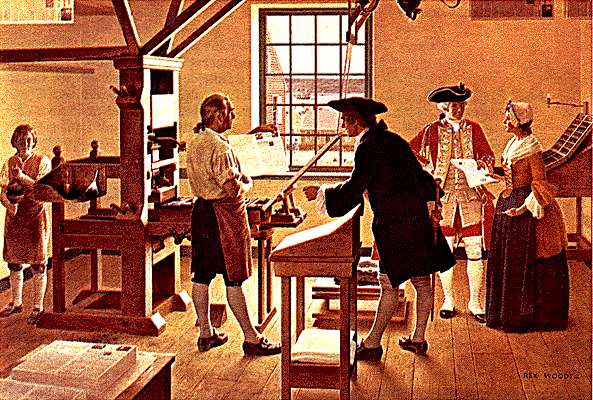Taking these early North-American newspapers –Publick Occurrences & The Halifax Gazette- at face value, the one of the first things you notice is the absence of photographs. At this point in history, the camera had not yet been invented, so the make-up of the newspaper was mainly textual. Rather than pictures, copies of inked images made by artists line the tops or bottoms to decorated the page.
 |
| Artistic rendition of the first issue of the Halifax Gazette being published. Canada's first newspaper. |
One of the two newspapers, Publick Occurrences in Boston, in which I was asked to look at, had once been shut down for being too critical about the United States.
Personal freedom is an import aspect of a democratic society, however, there are some instances where defensive protocols must be made. Now, as seen in the recent events of the Arab Spring, revolutions are now brought about through personal publishing through the Internet. Blogs, a distinct form of Journalism and social media, are very popular in the Middle East for the purpose that the government has no control over who says what if you post under a different name than your own. In some countries, as in Egypt, certain websites had to be temporarily shut down because of the aid it gave to the protesters.
Yet, even more recently, we are provided with a very good example of a situation where the government must and does intervene: what happened with the Duke and Duchess of Cambridge while in France.
Malicious journalism existed back then, and it clearly exists in the world today. Gossip and the need to retaliate to make change are deeply ingrained in human nature. The absence of those two things can only ever subsist in the mind of an idealist.
No comments:
Post a Comment